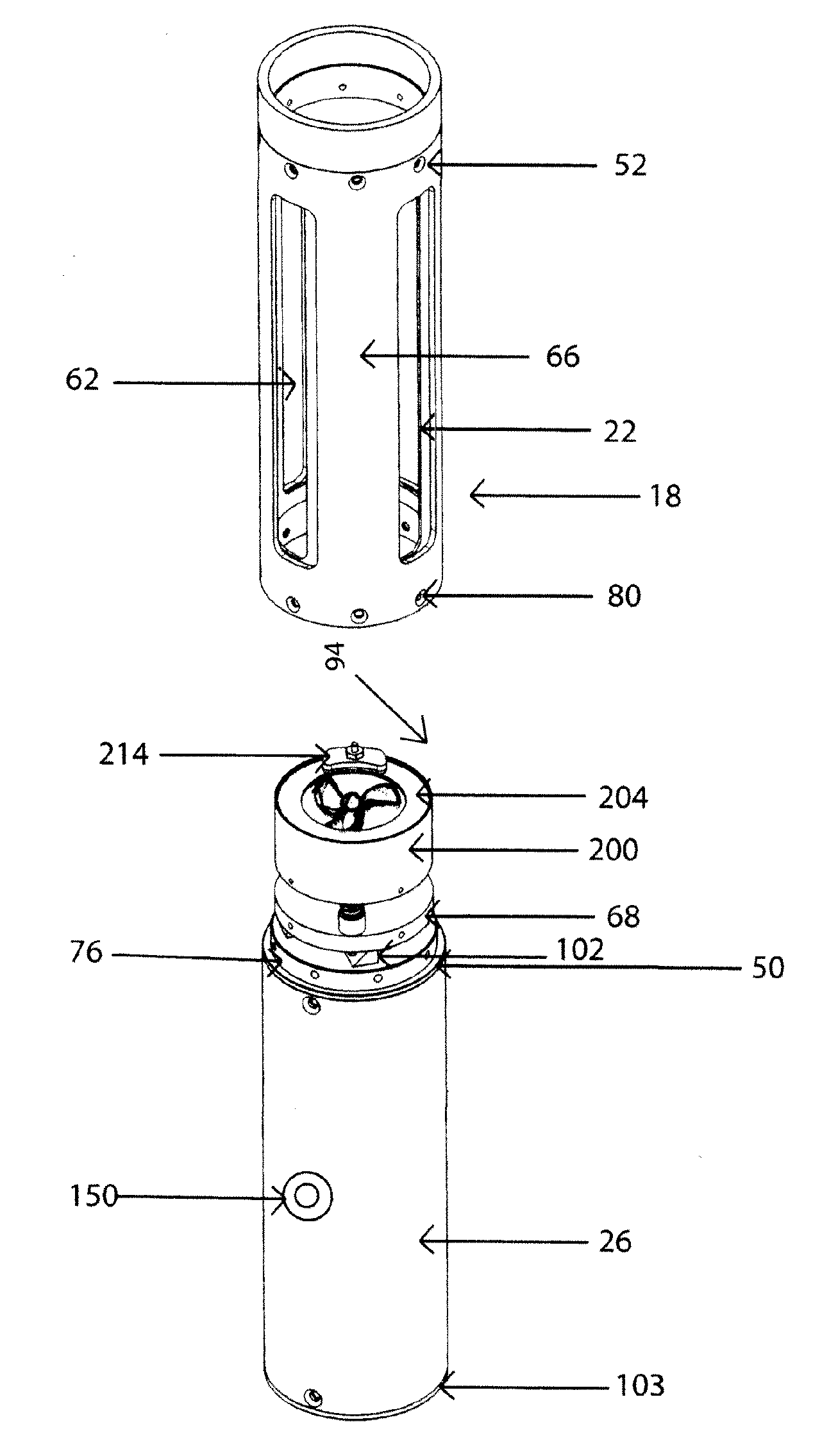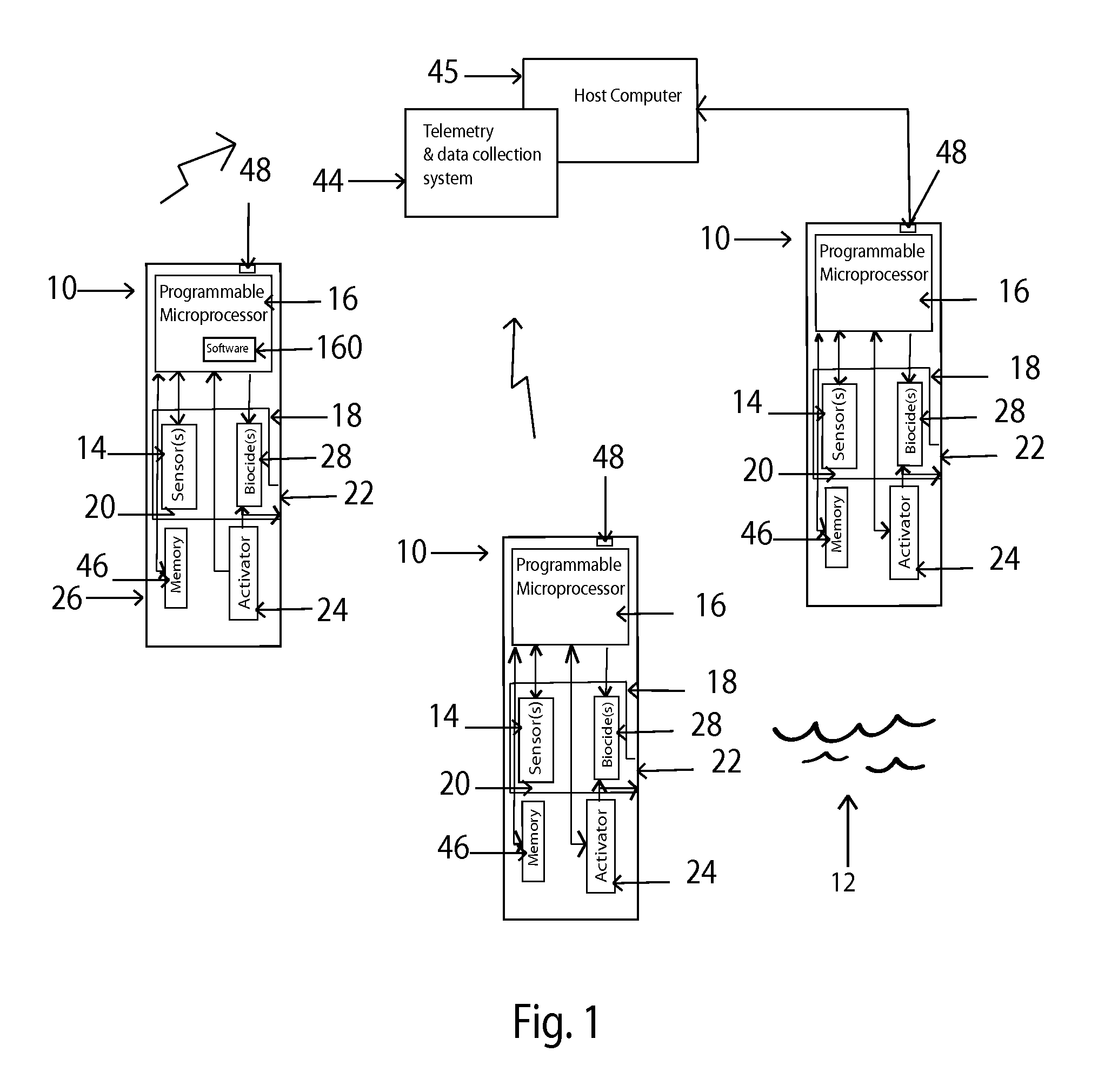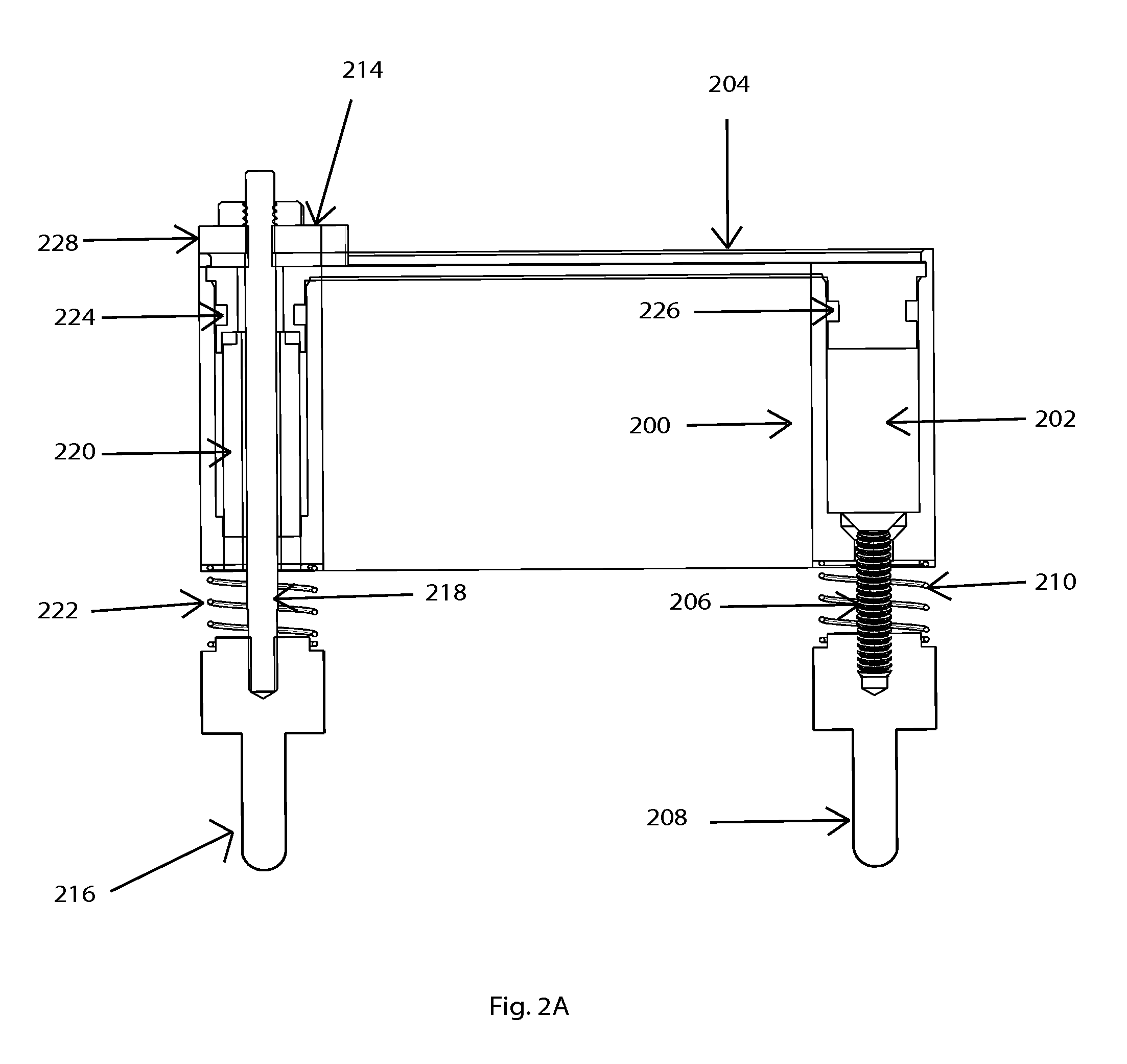Autonomous device with biofouling control and method for monitoring aquatic environment
a technology of autonomous devices and biofouling, which is applied in the direction of valve operating means/releasing devices, process and machine control, instruments, etc., can solve the problems of insufficient soluble anti-biofouling paints, inability to directly apply anti-biofouling paints to sensors, and insufficient biofouling prevention. , to achieve the effect of increasing the efficiency of stirring propeller, rapid and even dispersal of biocide matter, and long deployment times
- Summary
- Abstract
- Description
- Claims
- Application Information
AI Technical Summary
Benefits of technology
Problems solved by technology
Method used
Image
Examples
Embodiment Construction
[0062]Referring to FIG. 1, a programmable autonomous device 10 is shown with biofouling control for monitoring fluid environment (for example aquatic environment or gaseous environment) 12 and is designed for deployment at a predetermined position in an aquatic environment for an extended period of time. Due to the anti-fouling control, the autonomous device 10 is capable of autonomous operation without the need for servicing for periods of one to several months.
[0063]The autonomous device 10 of the present invention may use any number of sensors 14 of a variety of types and is adapted to protect analog or serial sensors for measuring physical and chemical parameters of the water in the aquatic environment 12. As one of many possible examples, a multiprobe sensor instrument may be used with the autonomous device 10 of the present invention, such as multi-parameter Sondes YSI6600 for monitoring dissolved oxygen, chlorophyll, blue-green algae, turbidity, temperature, pH level, etc., a...
PUM
 Login to View More
Login to View More Abstract
Description
Claims
Application Information
 Login to View More
Login to View More - R&D
- Intellectual Property
- Life Sciences
- Materials
- Tech Scout
- Unparalleled Data Quality
- Higher Quality Content
- 60% Fewer Hallucinations
Browse by: Latest US Patents, China's latest patents, Technical Efficacy Thesaurus, Application Domain, Technology Topic, Popular Technical Reports.
© 2025 PatSnap. All rights reserved.Legal|Privacy policy|Modern Slavery Act Transparency Statement|Sitemap|About US| Contact US: help@patsnap.com



